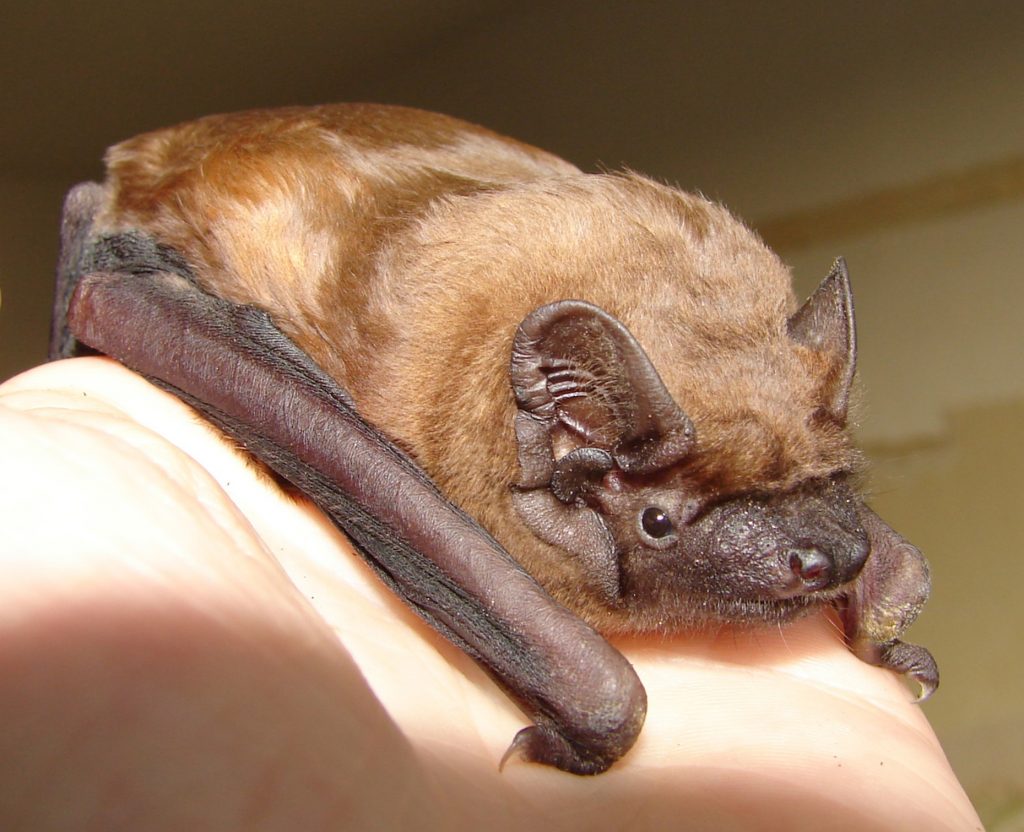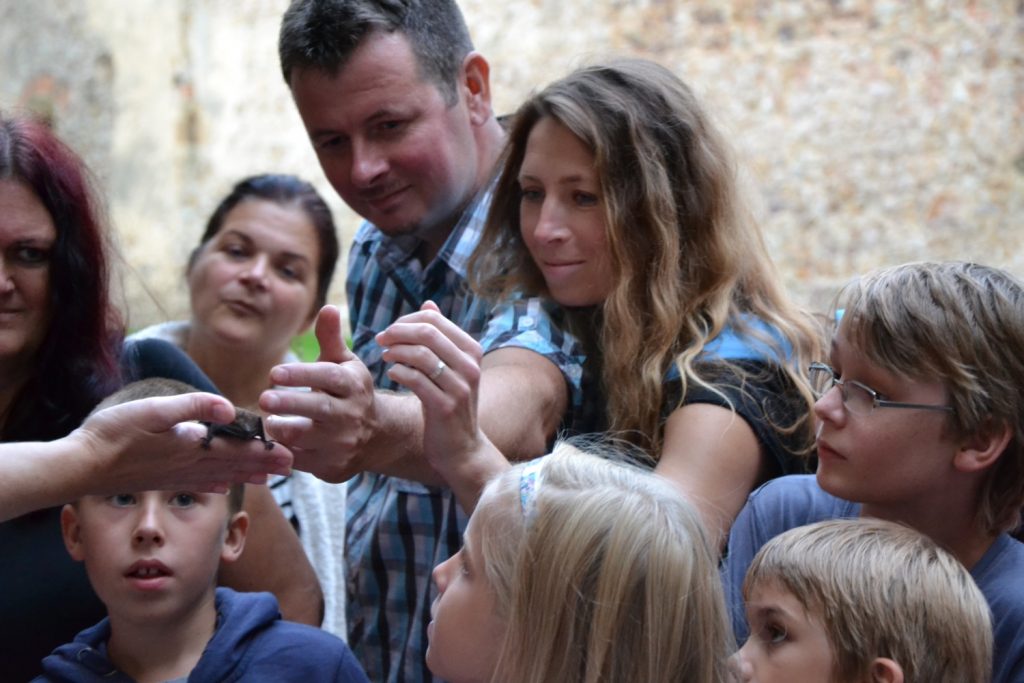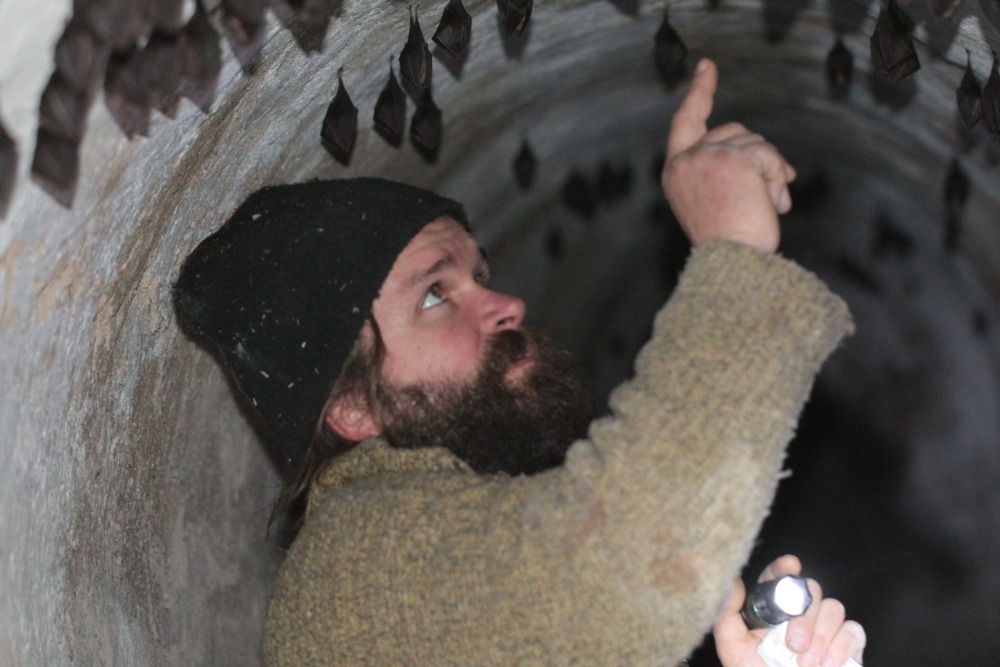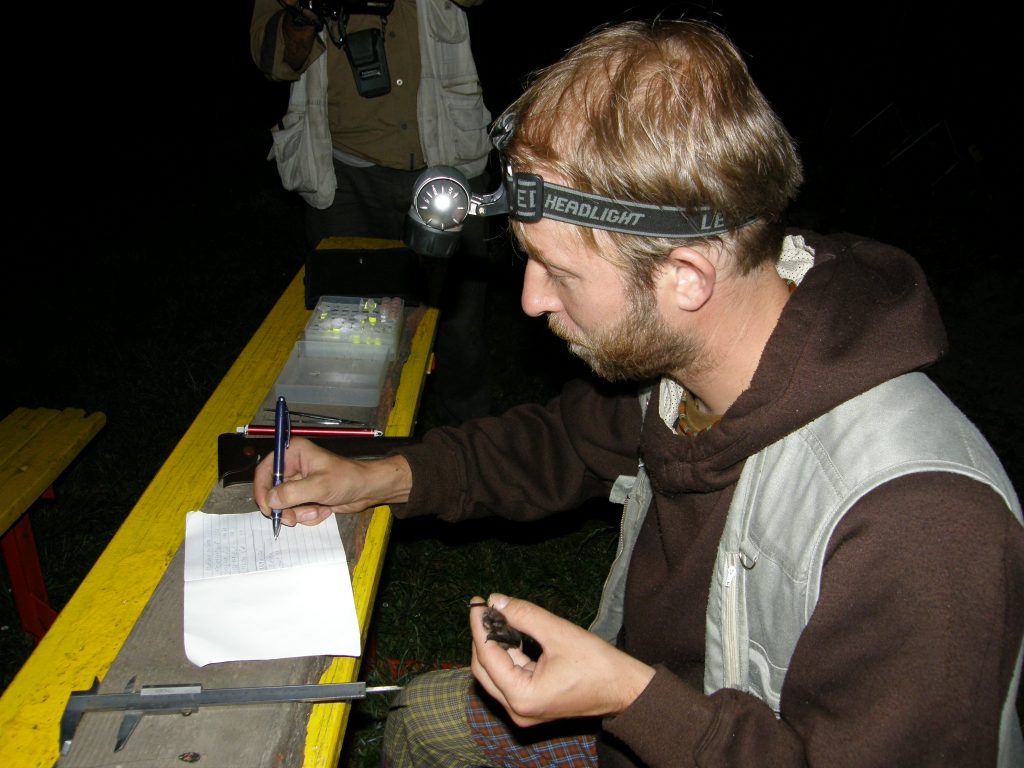Synanthropic bats are in danger
Bats occupy a wide range of roosts in buildings as well as in trees, and they also use parks and gardens as hunting grounds. Out of 27 bat species known to occur in the Czech Republic, at least 18 are regularly found in human settlements.
However, this way of life brings numerous risks to the bats. Roof renovations, reconstructions and insulation of buildings and cutting of trees are particularly dangerous, as they cause roost loss but bats may be even directly threatened during the works. At the same time, the presence of bats in houses is often perceived by the inhabitants rather negatively.
How to achieve their good conservation status
Effective conservation of synanthropic bats is only possible when different target groups are involved – regional and local authorities, specialised companies and the general public. Long-term influencing through a wide range of activities is also necessary, from educational and awareness events, through providing consultancy service to solving specific situations at the particular sites. This has been apparent from the previously implemented ČESON projects.
Project activities
FOR GENERAL PUBLIC
Public awareness events: Field trips to parks and urban habitats, lectures, events within the annually held International Bat Night, as well as presentations of the travelling exhibition will be organised (altogether 50 events).
Educational programme “Bat researchers”: Special “researcher” backpacks will be prepared, containing ultrasound bat detectors, a simple manual for bat identification bats and a field guide. A list of recommended sites for bat watching in selected big towns will also be provided. The backpacks will be lent to schools and children’s hobby groups for individual evening bat walks. A best blog post competition will be organised.
Playful worksheets: A new “Bats in town” worksheet will be prepared to supplement the previously published series of similar materials (Bats at castles and chateaus, Bats in underground, Bats in parks etc.).
Bat questing: Three new quests (outdoor games) in urban habitats important for bats will be created. Pdfs including texts and maps will be made available at the website.
Interactive bat map: New localities will be added to the interactive map showing tourist sites (castles, chateaus, show caves) where people can get more information about bats living there. For each locality, an article is published at the website which can be used for planning of a family or school trip. Cooperation will be established at 10 new sites with parks, gardens etc.
Information panels: In selected parks where bats are known to occur and specific measures for their conservation have been undertaken, panels providing photos and information will be installed.
Webinars to popularize bat research: A series of five webinars for the public (“Bat soirées”) will be organised in cooperation with Czech bat experts. Interesting topics will be presented and people will have the opportunity to ask and discuss with scientists. The recordings will be available on youtube.
Awareness videos: Six short videos about bats and their practical conservation will be prepared (e.g. life in a nursery colony, how to map trees with potential bat roosts, making and installing a bat box) and made available on youtube.
Motivation programme “My neighbour is a bat”: Building owners who enable bats to use their house or undertake a bat friendly reconstruction, receive a special award – a memorial plaque. The programme started in 2011 and over 130 people/institutions have already been awarded. At least 15 more will be recognised during the project.
Consultancy service: Solving individual cases related to bat conservation – findings of injured or exhausted bats, planned renovations of buildings, problems with bat presence in houses (guano, noise), planned cutting of trees etc. The service is provided for free. Every year, 500-700 consultations are given. Personal visits of the sites are necessary in about a quarter of the cases.

FOR AUTHORITIES AND COMPANIES
Marking trees with bat roosts at model sites: A new system of tree marking will be developed and tested at least in three parks with trees known to be inhabited by bats. The signs identifying important trees will be helpful during park maintenance.
Educational workshops: Training of the staff of local authorities and companies responsible for tree maintenance in settlements will be focused on the conservation of bats using tree cavities. Careful techniques of tree cutting, suitable periods of work, possible alternative and compensation measures as well as a bat-friendly approach during long-term care of the parks will be presented.
Guidance and information materials: A new brochure “Taking care of trees with respect to bats” will be published, describing suitable measures during maintenance and cutting of trees. The brochure will be distributed to authorities, companies and expert organisations. A leaflet providing briefer information on this topic will also be published.
About us
 The Czech Bat Conservation Society (ČESON) was founded in 1991, nowadays associating about 130 members. The mission of this non-governmental organisation is coordination of conservation and research of bats and their habitats. ČESON gathers information about bat conservation problems, calls attention of responsible authorities to these problems and suggests their solution. ČESON prepares expert opinions and promotes cooperation between amateur bat workers, general public, professional bat experts and authorities. ČESON ensures implementation of national as well as international projects on bat conservation. In cooperation with the Agency for Nature Conservation and Landscape Protection, ČESON is a guarantor of national monitoring of bat populations. ČESON organises educational and awareness events, produces guidance and information materials and provides consultancy to the public. Great attention is paid to education of children at schools.
The Czech Bat Conservation Society (ČESON) was founded in 1991, nowadays associating about 130 members. The mission of this non-governmental organisation is coordination of conservation and research of bats and their habitats. ČESON gathers information about bat conservation problems, calls attention of responsible authorities to these problems and suggests their solution. ČESON prepares expert opinions and promotes cooperation between amateur bat workers, general public, professional bat experts and authorities. ČESON ensures implementation of national as well as international projects on bat conservation. In cooperation with the Agency for Nature Conservation and Landscape Protection, ČESON is a guarantor of national monitoring of bat populations. ČESON organises educational and awareness events, produces guidance and information materials and provides consultancy to the public. Great attention is paid to education of children at schools.
The project was supported by the State Environmental Fund of the Czech Republic.






















